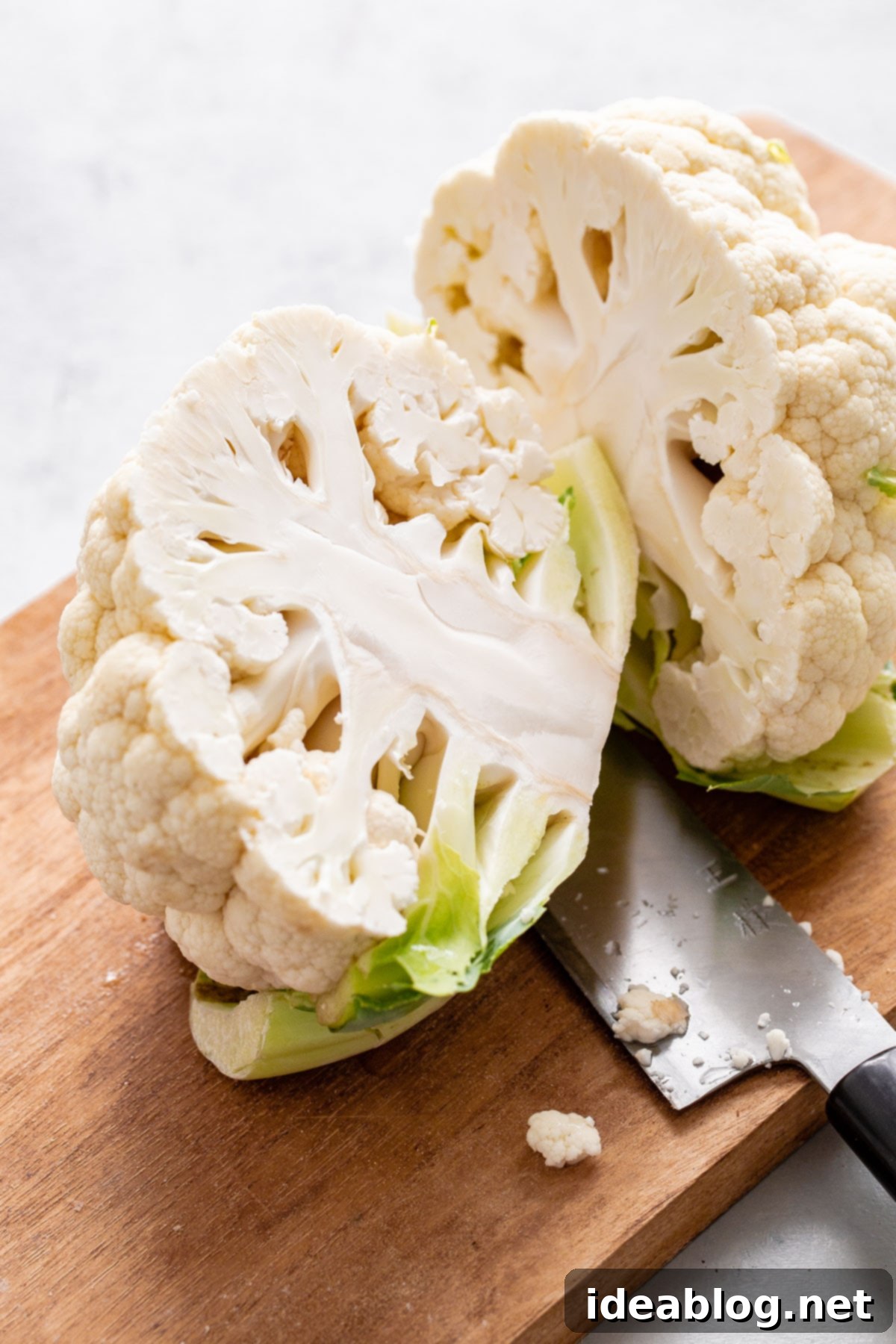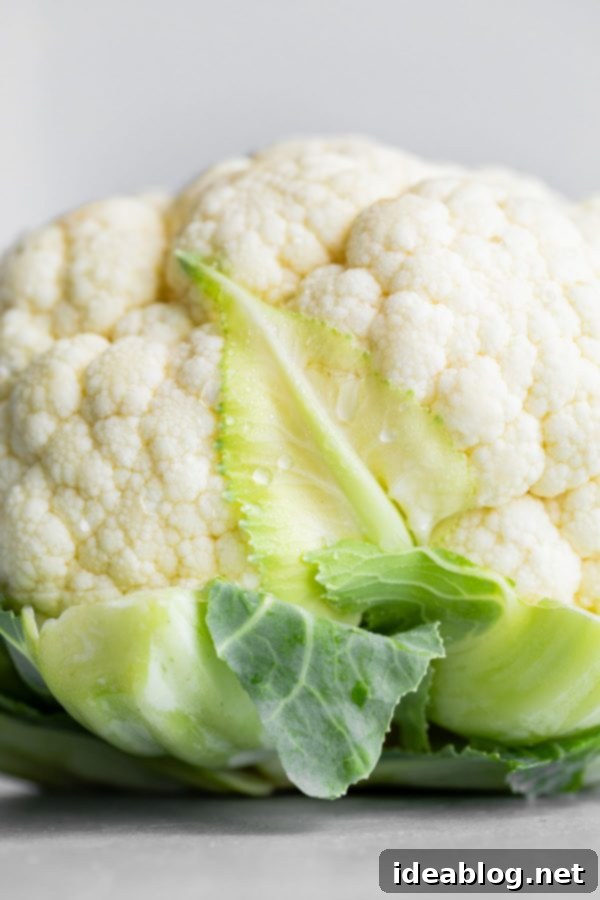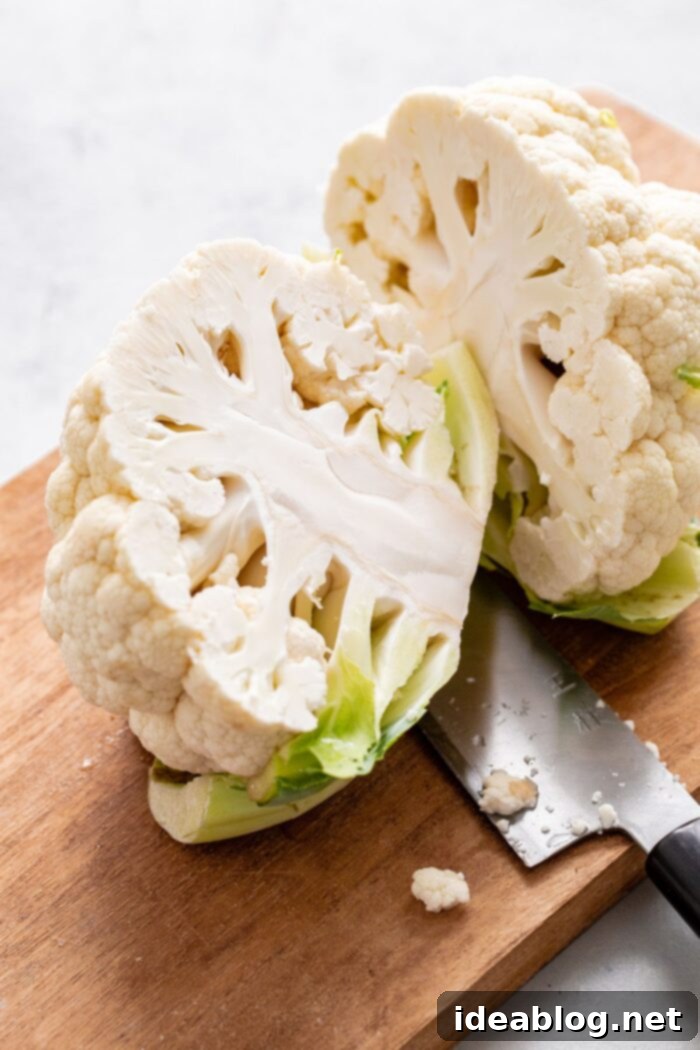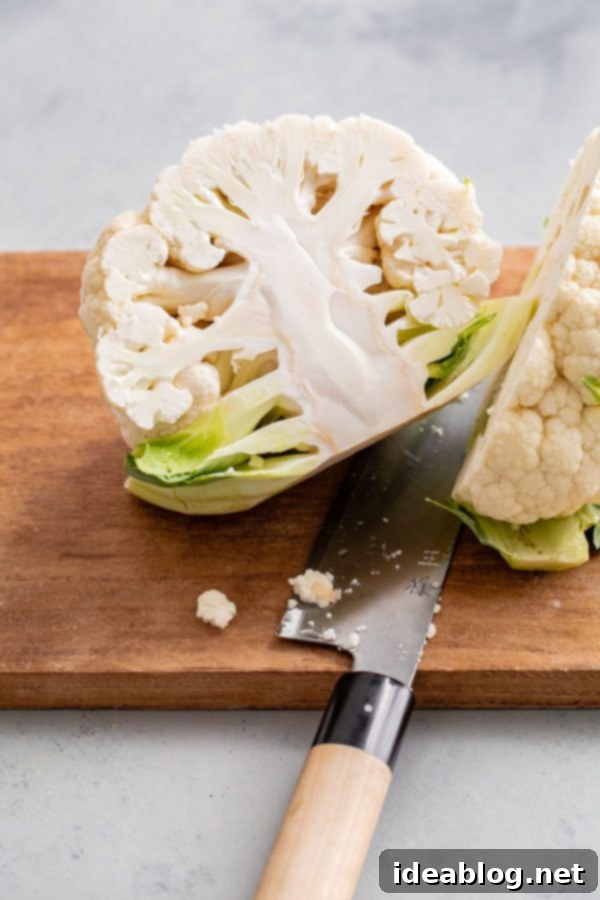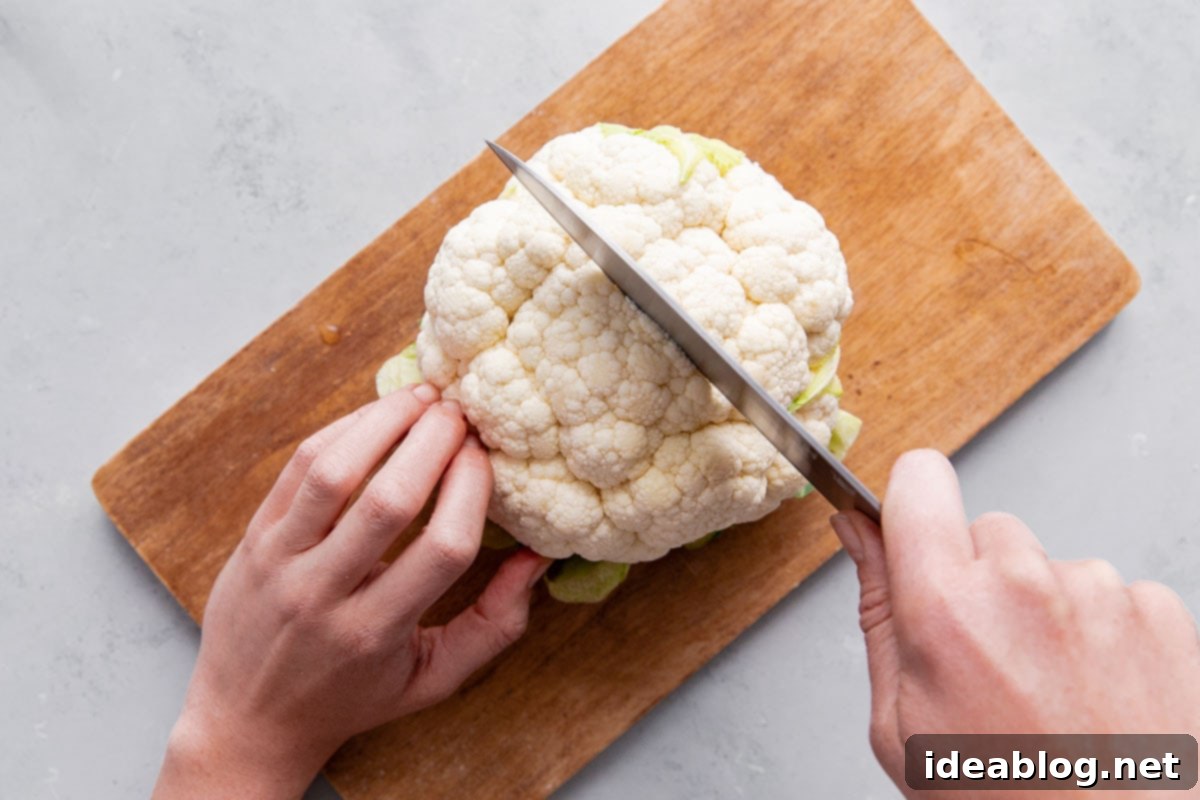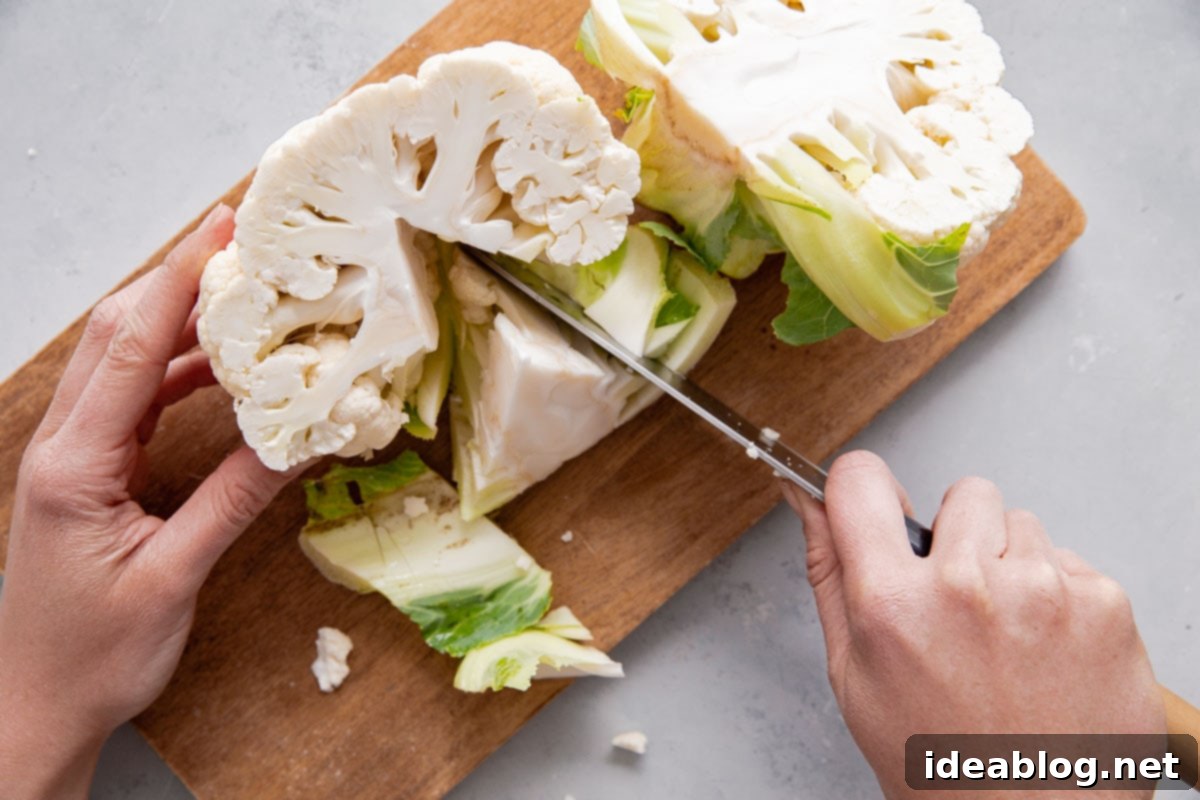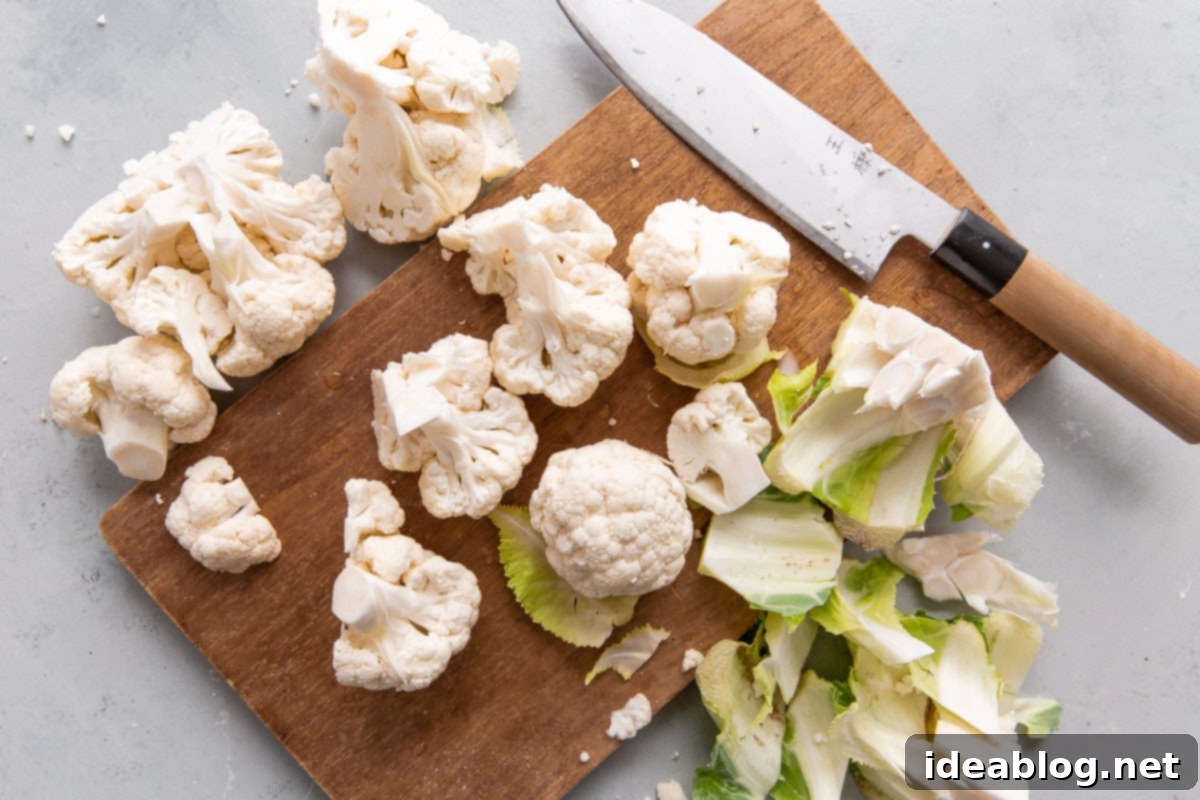Mastering Cauliflower: Your Essential Guide to Cutting, Storing, and Preparing Perfect Florets
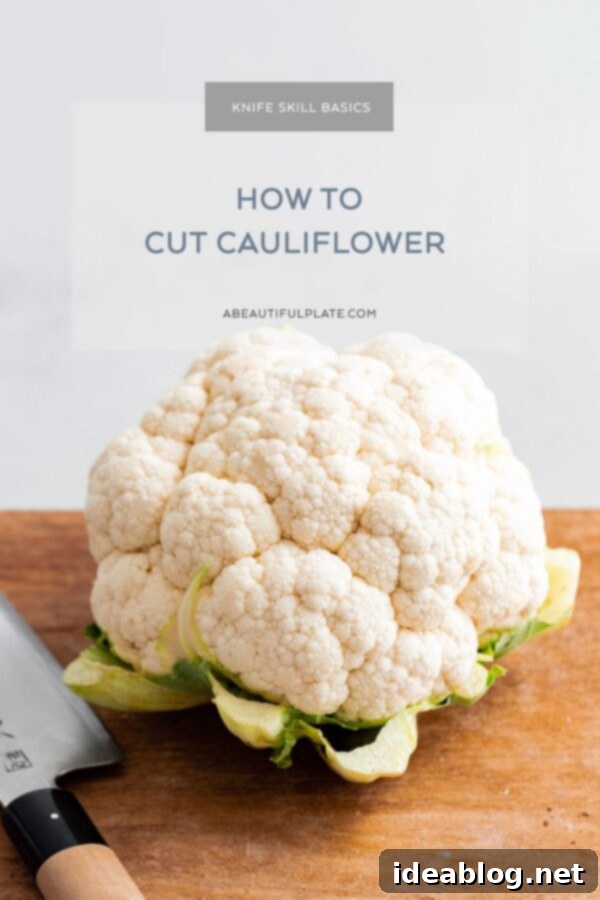
Cauliflower is truly one of the most versatile and beloved vegetables in kitchens worldwide. From homemade cauliflower curry to comforting roasted cauliflower soup, its mild flavor and adaptable texture make it a fantastic ingredient for an endless array of dishes. Whether you’re roasting it whole, mashing it, ricing it, or incorporating it into a stir-fry, knowing how to properly prepare this cruciferous vegetable is key to unlocking its full culinary potential.
With an exciting new cauliflower recipe on the horizon, we’re kicking off a brand new series on the blog called Knife Skill Basics. Our aim is to empower home cooks with fundamental techniques that transform kitchen tasks from daunting to delightful.
This new series, inspired by our popular Ingredient Spotlight guides, will delve into essential kitchen skills through step-by-step photos, practical preparation tips, and valuable insights. Our goal is to expand our cooking resource library and help you build confidence in the kitchen, regardless of your experience level. Whether you’re a seasoned chef or just beginning your culinary journey, we hope these guides provide useful knowledge and inspire your next delicious meal.
How to Choose and Buy the Best Cauliflower
Selecting a fresh, high-quality head of cauliflower is the first step to a successful dish. When you’re at the grocery store or farmer’s market, keep these tips in mind:
- Weight and Firmness: Always opt for cauliflower heads that feel heavy for their size and are very firm and compact. A loose or lightweight head indicates it might be older or dried out.
- Color: Look for a vibrant white (or purple, green, orange, depending on the variety) color. Avoid any heads with significant brown spots, yellowing, or dullness, which are signs of spoilage. Small, isolated brown spots can sometimes be shaved off, but extensive discoloration is a red flag.
- Florets: The florets should be tightly clustered together, showing no signs of opening or separating easily. This density contributes to better texture and freshness.
- Leaves: The outer green leaves, if present, should be crisp, fresh-looking, and tightly wrapped around the florets. Wilting or yellowing leaves suggest the cauliflower has been sitting around for too long.
- Smell: A fresh cauliflower should have a very subtle, earthy scent. If it has a strong, pungent, or sulfur-like odor, it’s past its prime.
When is cauliflower in season?
While cauliflower is readily available year-round in most supermarkets, its peak season typically runs through fall and early winter. This is when you’ll find the freshest, most flavorful, and often most affordable heads.
Storing Cauliflower for Maximum Freshness
Proper storage is essential to keep your cauliflower fresh and prevent premature browning. Here’s how to do it:
- Initial Preparation: If your cauliflower has any moisture on it (from washing or condensation), gently pat it completely dry with a paper towel before storing. Excess moisture can accelerate spoilage.
- Refrigeration: The best way to store a whole head of cauliflower is in the crisper drawer of your refrigerator. Ideally, place it stem-side down in a loose plastic bag or wrap it in a damp paper towel before placing it in a perforated plastic bag. This helps maintain humidity without trapping too much moisture.
- Optimal Use: Cauliflower is best used within a few days of purchasing. It can brown relatively quickly once exposed to air.
- Handling Brown Spots: If you notice minor brown spots appearing on the florets, don’t worry! These are usually just oxidation and don’t necessarily mean the cauliflower is spoiled. For aesthetic purposes, especially if you’re serving it raw or as a prominent side, you can easily use a microplane or a small paring knife to gently shave off the discolored areas.
- Freezing for Long-Term Storage: For longer storage, cauliflower can be frozen. First, cut it into florets as described below. Blanch the florets in boiling water for 3-5 minutes, then immediately transfer them to an ice bath to stop the cooking process. Drain thoroughly, pat dry, and spread them in a single layer on a baking sheet to flash freeze. Once frozen solid, transfer them to airtight freezer bags, removing as much air as possible. Frozen cauliflower is best used in cooked dishes like soups, stir-fries, or purees, as its texture will be softer upon thawing.
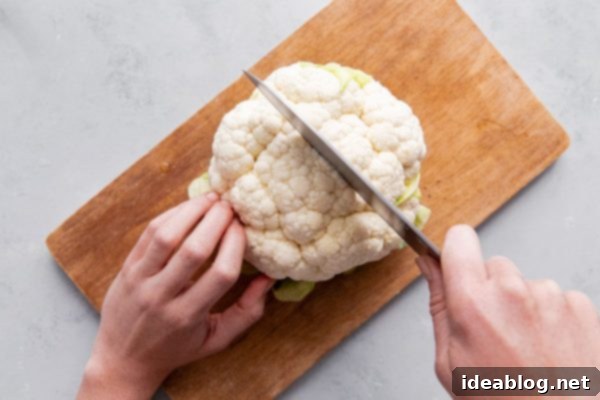
How to Cut Cauliflower into Perfect Florets
Cutting cauliflower into uniform florets is a fundamental skill that ensures even cooking and an appealing presentation. Here’s a detailed, step-by-step guide:
Step 1: Prepare Your Workstation and Cauliflower
- Gather Tools: You’ll need a large, sharp chef’s knife, a sturdy cutting board, and a bowl for the florets.
- Clean the Cauliflower: Rinse the entire head of cauliflower under cold running water to remove any dirt or debris. Pat it thoroughly dry with a clean kitchen towel or paper towels.
Step 2: Remove the Outer Leaves
- Lay the cauliflower on its side. Use your chef’s knife to carefully slice off the large, tough outer green leaves from around the base of the head. Discard any bruised or wilted leaves, but save the fresh, smaller inner leaves and the stem for other uses (more on this below!). This step exposes the stem and provides a clearer view of the core.
Step 3: Trim the Bottom of the Stalk for Stability
- Place the cauliflower stem-side down on your cutting board. Using your large chef’s knife, carefully slice off a small portion of the very bottom of the main stalk. The goal is to create a flat, stable base so the cauliflower can sit securely on your cutting board without wobbling. This significantly improves safety during subsequent cuts.
Step 4: Halve the Cauliflower
- With the cauliflower standing stable on its trimmed stem, carefully slice it in half directly through the crown and down through the core. You’ll now have two halves, each showing a cross-section of the florets attached to the central core.
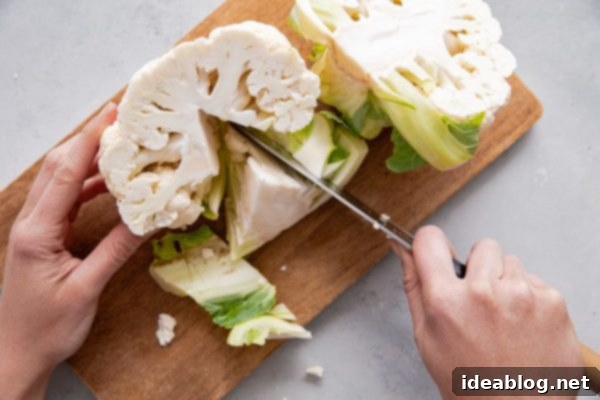
Step 5: Remove the Core (The “V-Cut” Method)
- Take one half of the cauliflower and hold it firmly with one hand, florets facing up.
- Using your knife, make an angled cut alongside the visible central core, moving from the top of the crown down towards the base of the stem. Imagine cutting out an upside-down ‘V’ shape to free the florets from the tough, woody core. Repeat this on the other side of the core if necessary.
- Many of the florets will naturally separate as you remove the core. For any remaining florets still attached to small pieces of core, gently pry them off with your fingers or use your knife to make small, precise cuts.
- Repeat this process for the second half of the cauliflower.
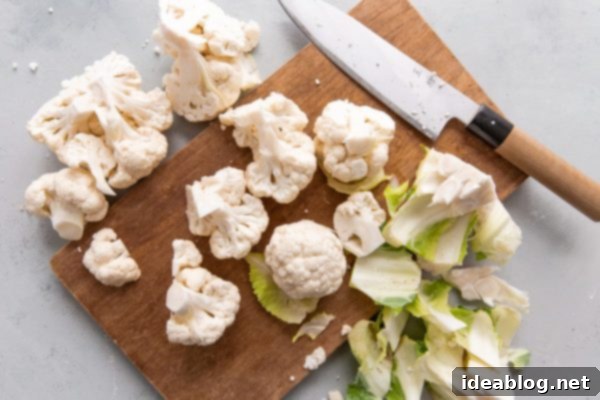
Step 6: Break Down Florets to Desired Size
- Once you have all the individual florets, assess their size. For most recipes (roasting, steaming, stir-frying), you want florets that are roughly uniform in size – typically bite-sized or about 1 to 1.5 inches. This ensures they cook evenly.
- For any larger florets, use your knife to halve or quarter them, cutting straight through the small stem of the floret. Avoid tearing them apart, as this can create uneven pieces and more “crumbles.” Aim for clean cuts.
- Collect your perfectly cut cauliflower florets in a bowl, ready for your chosen recipe!
Can You Eat Cauliflower Leaves and Stems? Absolutely!
Yes, the leaves and stems of cauliflower are completely edible and should not be wasted! They have a slightly stronger, earthier flavor than the florets and a firmer texture. Here’s how to use them:
- Preparation: Always remember to clean them thoroughly under running water. For the main stalk, I highly recommend peeling the tougher outer layer with a vegetable peeler, as it can be quite fibrous. The leaves generally don’t need peeling, but remove any very tough or discolored parts.
- Culinary Uses:
- Sautéed: Chop the stems and leaves finely and sauté them with garlic and olive oil as a side dish, or add them to stir-fries, omelets, or frittatas.
- Soups and Stocks: They add great depth of flavor to vegetable stocks or pureed cauliflower soups. You can even roast them alongside the florets before adding to soup.
- Stir-fries: Incorporate chopped stems and leaves into your favorite stir-fry recipes for added texture and nutrients.
- Roasted: Toss chopped stems and leaves with olive oil, salt, and pepper and roast them alongside your florets until tender-crisp.
- Pesto: Believe it or not, the tender inner leaves can be blended into a flavorful pesto!
- Storage: If not using immediately, store cleaned and chopped stems and leaves in an airtight container in the refrigerator for a few days, or freeze them for longer storage (perfect for adding directly to simmering soups or stocks).
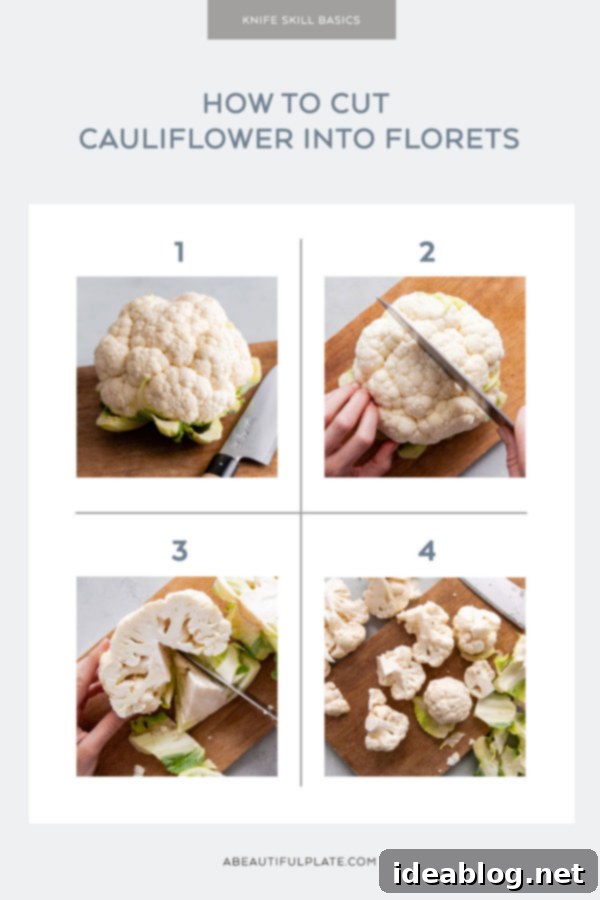
The Wonderful Health Benefits of Cauliflower
Beyond its culinary versatility, cauliflower is a nutritional powerhouse. It’s low in calories and carbohydrates while being rich in essential vitamins and minerals. Here are some key benefits:
- Rich in Vitamins C and K: Vitamin C is crucial for immune function and skin health, while Vitamin K is vital for blood clotting and bone health.
- Good Source of Fiber: Dietary fiber aids in digestion, promotes gut health, and can help regulate blood sugar levels.
- Contains Antioxidants: Cauliflower boasts a variety of antioxidants, including glucosinolates and isothiocyanates, which are known for their anti-inflammatory and cancer-fighting properties.
- Choline: This essential nutrient, found in cauliflower, plays a role in brain development and nerve function.
- Versatile for Various Diets: Its low-carb profile makes it a popular substitute for grains and legumes in keto, paleo, and low-carb diets (e.g., cauliflower rice, mashed cauliflower, cauliflower pizza crust).
Favorite Cauliflower Recipes & Usage Ideas:
Once you’ve mastered cutting cauliflower, a world of delicious possibilities opens up. Here are some of our go-to recipes and general ideas for using those beautiful florets:
- Roasted Cauliflower Soup: Roasting brings out an incredible depth of flavor before pureeing into a creamy, comforting soup.
- Cauliflower Curry: A hearty and flavorful vegan dish that showcases cauliflower’s ability to absorb rich spices.
- Fried Cauliflower Steaks: A fantastic vegetarian main course, these thick slices of cauliflower are pan-fried until golden and tender.
- Cream of Cauliflower Soup: A classic, silky soup that’s perfect for a cozy meal.
- Roasted Cauliflower: Toss florets with olive oil, salt, pepper, and your favorite spices (paprika, cumin, turmeric) and roast at high heat until tender and caramelized.
- Cauliflower Rice: Pulse raw florets in a food processor until they resemble grains of rice. Use as a low-carb alternative to traditional rice, or add to stir-fries and salads.
- Mashed Cauliflower: Steam or boil florets until very tender, then mash with butter, milk, salt, and pepper for a healthier alternative to mashed potatoes.
- Grilled Cauliflower: Brush florets with olive oil and spices, then grill until tender with lovely char marks.
- Air Fryer Cauliflower: A quick and easy way to get crispy, tender florets with minimal oil.
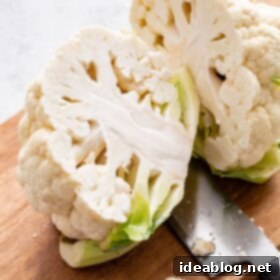
How to Cut Cauliflower
Pin
Review
SaveSaved!
Ingredients
- 1 (2 to 2½ lb) whole cauliflower head
- Large, sharp chef’s knife
- Sturdy cutting board
Instructions
-
First, wash the whole cauliflower head under cold water and pat it dry. Using a large, sharp chef’s knife, carefully slice off the large outer leaves. Then, trim a small portion off the bottom of the main stalk so the cauliflower can lay flat and stable on your cutting board. Set any fresh, edible leaves and the trimmed stem aside (see the Tips for Success section below on ways to use them!).
-
With the cauliflower standing stable on its trimmed stalk, carefully slice it in half directly through the crown and down through the core.

-
Take one cauliflower half and hold it firmly. Using your knife at an angle, cut alongside the central core in an upside-down ‘V’ shape to remove the tough core. Many of the florets will automatically separate; for any stubborn ones, use your knife to carefully detach them. Repeat this for the second half.

-
Finally, inspect your separated florets. Use your knife to halve or quarter any remaining large florets so that all pieces are roughly consistent in size for even cooking. This creates perfectly sized florets ready for your recipe!

Tips for Success:
- Knife Safety First: Always use a sharp chef’s knife and keep your fingers tucked away from the blade. A stable cutting board is also crucial.
- Cauliflower Leaves and Stems are Edible: Don’t throw them away! They are completely edible and nutritious. Be sure to clean them thoroughly. For the main stalk, I recommend peeling the tough outer layer with a vegetable peeler, as it can be quite fibrous.
- Creative Uses for Stems and Leaves: You can sauté the chopped stems and leaves, add them to stir-fries, incorporate them into vegetable stocks, or even roast them alongside your florets for a different texture. My favorite way to use them is to set them aside (freeze or refrigerate) for cauliflower soup, creamy purees, or as a flavorful addition to future stir-fries.
- Uniformity is Key: Aim for florets that are as close to the same size as possible. This ensures they cook evenly, preventing some pieces from becoming mushy while others are still raw.
- Store Properly: If not using immediately, store cleaned and dried cauliflower florets in an airtight container in the refrigerator for up to 3-4 days. For longer storage, blanch and freeze them.
